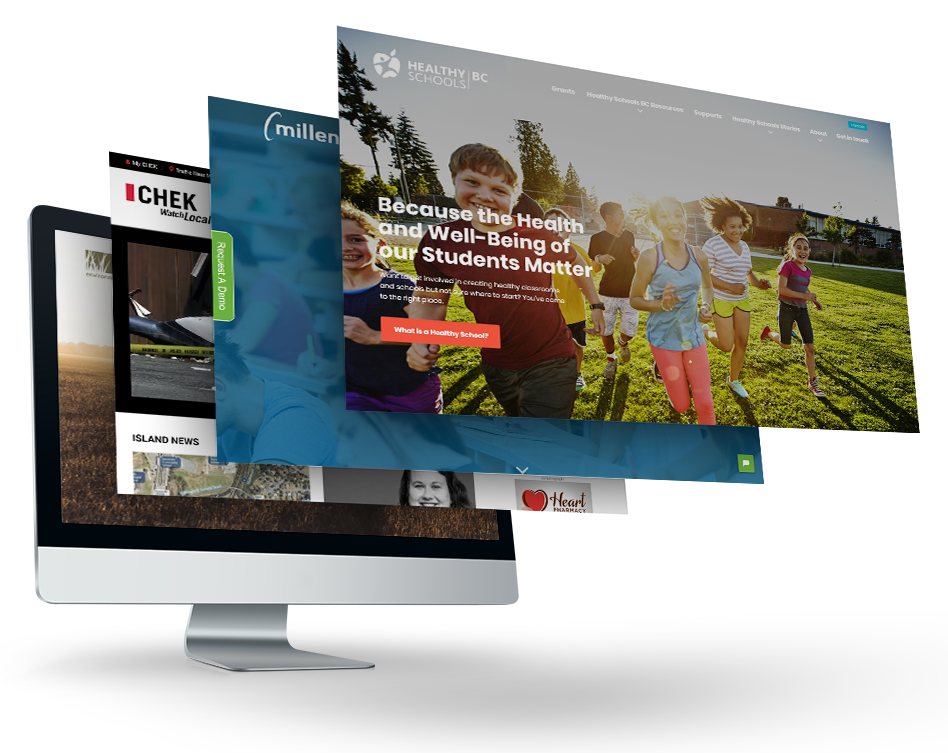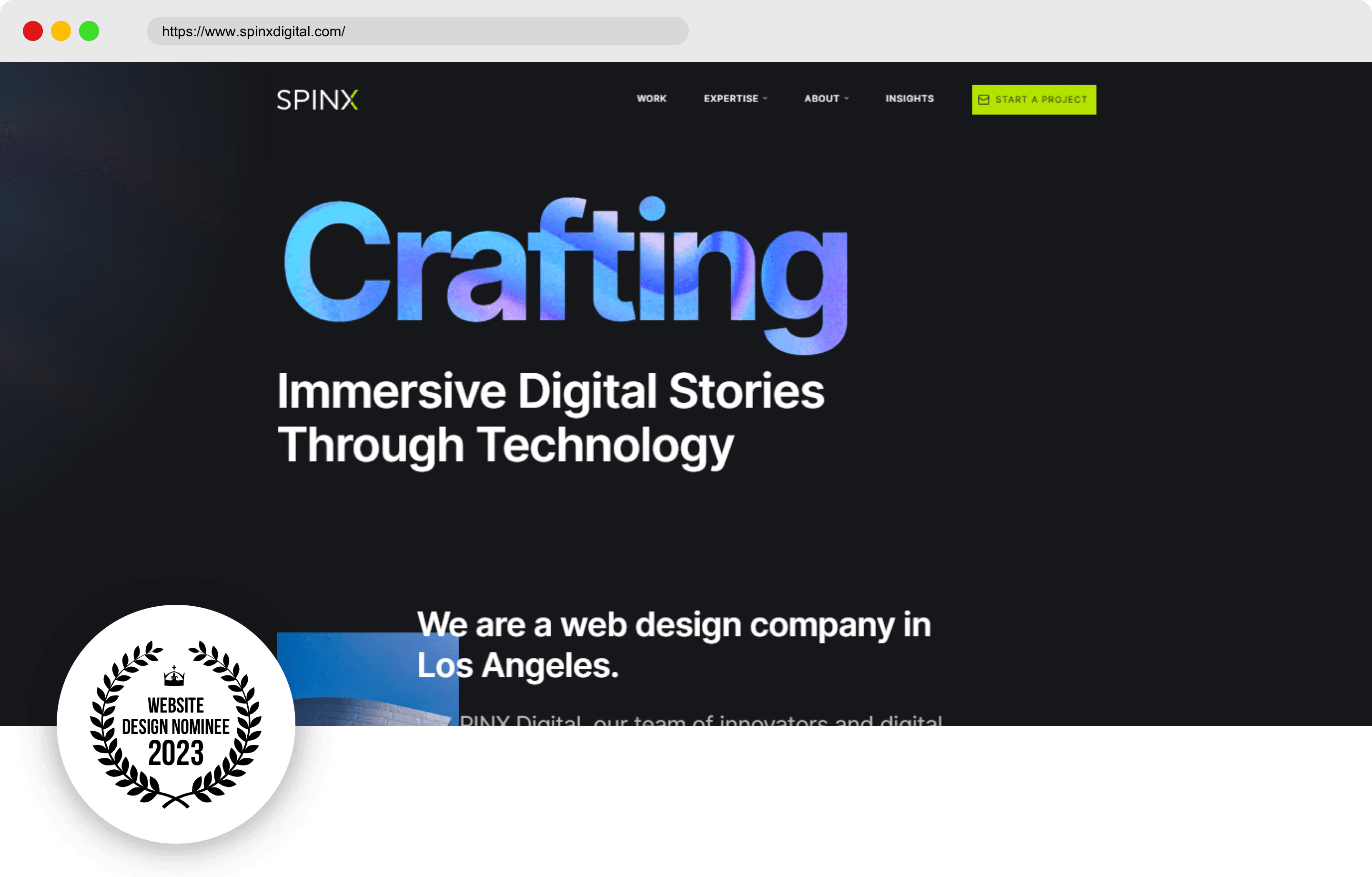Website Design in copyright: User-Friendly, Fast, and Responsive Websites
Website Design in copyright: User-Friendly, Fast, and Responsive Websites
Blog Article
Increase Involvement With Cutting-edge Internet Site Design Solutions
In the realm of digital interaction, the significance of ingenious web site style options can not be overemphasized. An attentively crafted user experience, underpinned by tactical visual design and interactive aspects, can significantly enhance user involvement. By discovering various methods such as responsive style and individualized web content, businesses can develop a system that not only captivates users however also cultivates lasting commitment. The difficulty lies in understanding the nuances of user actions and preferences. This raises an essential concern: what particular strategies can be applied to make certain that a website continues to be user-centric and compelling?
Comprehending Customer Experience
Comprehending individual experience (UX) is important for creating efficient website style solutions, as it straight influences exactly how customers communicate with electronic platforms. A comprehensive UX method incorporates different elements, including availability, user, and usability contentment, all of which add to the general performance of a website.
To start with, usability concentrates on just how conveniently customers can browse and discover the details they look for. website design copyright. A well-structured format, intuitive navigating, and clear contact us to action are essential components that improve use. Availability makes certain that all individuals, consisting of those with handicaps, can effectively interact with the web site. This entails making web content that is certified with availability standards and can be quickly accessed utilizing assistive technologies.
Moreover, recognizing customer identities is important for customizing the experience to satisfy details target market needs. By conducting customer research study and screening, developers can collect understandings that notify style decisions, guaranteeing the site not just satisfies visual goals yet also meets practical requirements. Eventually, a thoughtful method to UX layout promotes involvement, motivates retention, and improves overall individual fulfillment, which are vital for the success of any kind of digital system.
Visual Design Approaches
Including reliable aesthetic design techniques is crucial for capturing customer interest and boosting the overall user experience on a web site. A well-balanced visual pecking order overviews customers with the web content, allowing them to easily browse and absorb details. This can be achieved with the strategic use typography, color design, and spacing, which jointly produce a cohesive and engaging design.
Shade plays an essential duty in establishing and evoking emotions brand identity. Utilizing a well balanced shade scheme that aligns with the brand's values can cultivate familiarity and trust. Additionally, integrating premium photos and graphics boosts aesthetic allure and can considerably boost customer interaction.
Whitespace, usually overlooked, is equally crucial as it enables material to breathe and avoids overwhelming customers with mess. It assists in much easier reading and comprehension, bring about an extra satisfying searching experience.

Interactive Elements for Engagement

One trick facet of interactive design is personalization. Tailoring experiences based on user actions and choices can considerably boost interaction. Individualized content recommendations or dynamic customer interfaces that adapt to specific choices develop a feeling of ownership and importance, motivating customers to check out even more.
Gamification is another effective technique. Including game-like components, such as accomplishments or rewards for finishing tasks, can change ordinary interactions right into pleasurable experiences. This approach not just boosts involvement however additionally motivates customers to return, producing a faithful audience.
Additionally, interactive aspects can promote social sharing, amplifying a site's reach. Attributes like comment areas, share switches, and user-generated content locations official site foster neighborhood interaction, turning site visitors right into energetic participants (website design copyright). Inevitably, the tactical use interactive aspects is necessary for creating a interesting and compelling site that reverberates with users
Responsive and Flexible Design
A properly designed website has to prioritize flexible and receptive design to ensure optimal customer experiences throughout a range of tools and display dimensions. Responsive layout employs liquid grids and versatile pictures, permitting the format to automatically adjust based on the customer's screen size. This method guarantees that customers can quickly connect and browse with the material, despite whether they are making use of a smartphone, desktop, or tablet .
In comparison, flexible design utilizes predefined layouts that are tailored to details device classifications. This suggests that the site detects the kind of gadget being utilized and offers the appropriate format, which can boost loading times and maximize the screen of crucial see components. While both approaches aim to enhance usability, receptive design is often favored for its fluidness and seamless shift in between devices.
Integrating flexible and receptive layout not just boosts individual fulfillment yet likewise positively affects search engine rankings. Search engines focus on mobile-friendly sites, thus enhancing exposure and drawing in even more visitors. Investing in these layout strategies is crucial for companies looking to involve their audience effectively and preserve a competitive side in today's electronic landscape.
Analyzing Individual Feedback and Data

Evaluating metrics such as bounce prices, time on web page, and click-through rates offers a quantitative viewpoint on customer involvement. These metrics help designers recognize which web content resonates and which locations may call for optimization. In addition, A/B testing can be used to examine variations in layout, permitting designers to make informed choices based on user interactions.
Including individual feedback not only improves site functionality yet also fosters a sense of community and count on. Engaging with customers through responses loopholes cultivates loyalty and motivates repeat visits. Inevitably, leveraging user feedback and data evaluation is important to producing a dynamic, user-centered web site that adapts to progressing user requirements and preferences, thus driving greater engagement and contentment.
Verdict
To conclude, innovative internet site design solutions considerably improve customer engagement by prioritizing user experience, using efficient visual strategies, and integrating interactive components. The application of responsive and adaptive style makes sure access across numerous tools, better promoting individual communication. Continuous evaluation of individual comments and information promotes continuous improvements, bring about sustained satisfaction and commitment. Ultimately, the merging of these layout principles grows that site an engaging online atmosphere, essential for driving enduring individual participation and commitment.
A thoughtfully crafted customer experience, underpinned by tactical aesthetic design and interactive elements, can considerably enhance user engagement.Including effective aesthetic layout techniques is crucial for catching customer focus and improving the overall individual experience on an internet site.User comments and data evaluation are vital elements of efficient web site style, as they offer important understandings right into user actions and preferences. Inevitably, leveraging customer responses and information evaluation is integral to creating a dynamic, user-centered website that adjusts to progressing user needs and choices, therefore driving greater involvement and fulfillment.
In final thought, ingenious site style solutions dramatically enhance individual involvement by prioritizing customer experience, employing effective aesthetic approaches, and integrating interactive elements.
Report this page